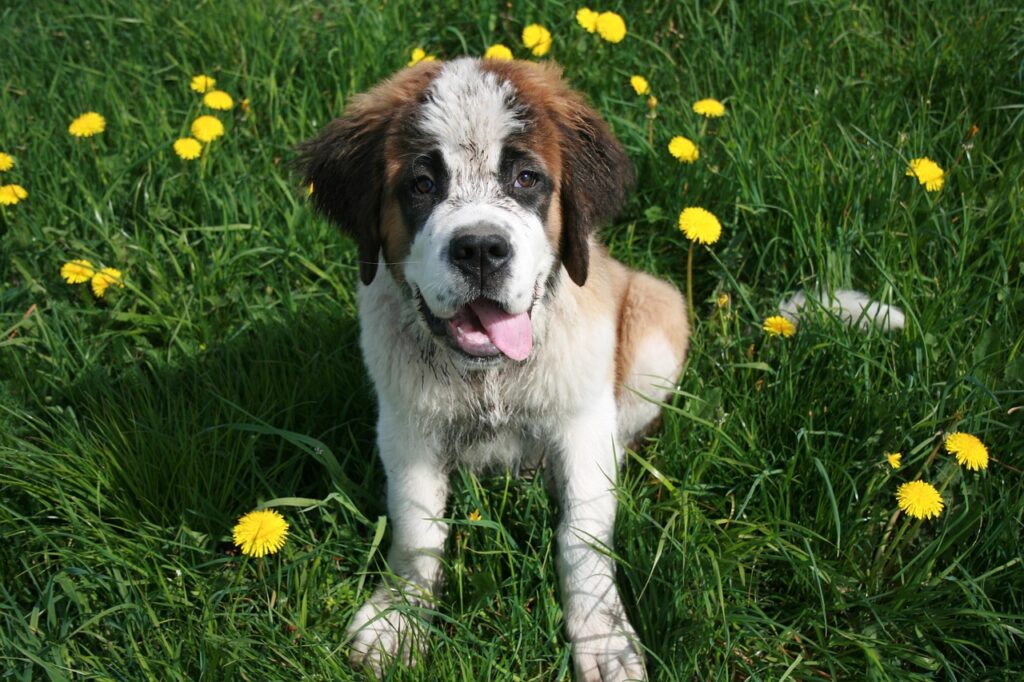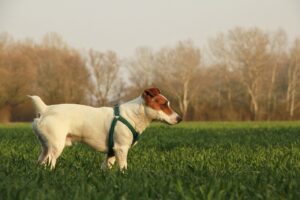
Saint Bernards, with their gentle and calm nature, offer a sense of tranquility that can be a welcome respite amid busy city life. Their endearing qualities, from their expressive eyes to their warm demeanor, make them a comforting presence in any setting, including the tropical environment of the Philippines.
These dogs are more than just pets; they are loyal companions embodying the ‘Bayanihan’ spirit valued in Filipino culture. Offering protection, companionship, and boundless affection, they are an ideal choice for Filipinos seeking a pet that mirrors their warm-hearted nature.
Immerse yourself in a comprehensive guide that navigates the intricacies of owning a Saint Bernard. This article will give you invaluable information about the cost, factors influencing it, annual expenses, identifying an authentic breed, and how to find a reputable breeder. Additionally, gain insights into the advantages and disadvantages of owning this breed, as well as explore other breeds bearing a striking resemblance to Saint Bernard.
How Much Does a Saint Bernard Cost in the Philippines?
The cost of bringing home these lovable giants can differ significantly, with prices in local marketplaces ranging from ₱15,000 to as high as ₱40,000 for a Saint Bernard puppy. This price variation can be attributed to many factors, including the puppy’s age, gender, lineage, and even the breeder’s location. It’s also worth noting that the higher end of this price range typically includes official documentation.
Puppies from an imported lineage or those with distinct color patterns might fetch a higher price. Saint Bernards may have either a short-haired (smooth) or long-haired (rough) coat, which may also impact their market value.
The expenses continue beyond the initial purchase, though. Owning a Saint Bernard means preparing for considerable yearly expenses, including food, grooming, and veterinary care.
Factors Affecting the Price
Understanding these elements can provide potential owners valuable insights before bringing this lovable giant into their homes.
a. Lineage
A significant factor influencing the price is the dog’s ancestry. Puppies from parents who have won awards or been imported typically command higher prices because of their exceptional lineage. This distinguished heritage often assures specific sought-after characteristics and minimizes the likelihood of breed-specific health complications.
b. Coat Color and Type
Interestingly, the color and type of coat can also affect its price. Unique color patterns or markings can make a puppy more desirable, thus raising its market value. Furthermore, Saint Bernards come in two coat types: short-haired (smooth) and long-haired (rough). Each type has its appeal and might influence a buyer’s preference.
c. Breeder Reputation
The breeder’s reputation plays a crucial role in determining the cost of a puppy. Reputable breeders invest time, effort, and resources to ensure the puppies’ health and well-being. They adhere to ethical breeding practices, provide necessary health tests, and offer post-purchase support, which can add to the puppy’s price.
d. Location
Finally, the location can impact the price. The demand may drive up the cost in areas where the breed is popular. Conversely, in regions where this breed is less common, the lack of competition might result in lower prices.
Various factors influence the price, each contributing to the final cost. As potential owners navigate purchasing a new pet, understanding these elements can help ensure a wise and informed investment.

The Yearly Expenses
Caring for a Saint Bernard comes with its own set of financial implications. Explore the detailed breakdown of the annual cost of owning this dog in the Philippines.
1. Food Expenses
These gentle giants have a hearty appetite. Given their size, they require a significant amount of food each day. A Saint Bernard can consume about 5 cups of high-quality dog food daily. Assuming a 15kg bag of premium dog food costs around ₱3,000 and lasts about a month, the yearly food expense would be approximately ₱36,000.
2. Veterinary Care
Regular vet visits are crucial to ensure your furry friend stays healthy. Including vaccinations, deworming, and routine check-ups, expect to spend around ₱5,000 per visit. Assuming at least two vet visits per year, the annual veterinary cost comes to ₱10,000.
3. Grooming
Saint Bernards, particularly those with longer coats, require regular grooming to maintain their coat’s health and prevent skin issues. Depending on the service, a grooming session can cost between ₱500 to ₱1,000. If grooming is done monthly, the annual cost can range from ₱6,000 to ₱12,000.
4. Miscellaneous Expenses
Harnesses, leashes, beds, toys, and other accessories are also included. While these are one-time expenses, they can add up. On average, expect to spend around ₱10,000 annually.
The Yearly Cost
So, the yearly cost of owning a Saint Bernard in the Philippines can range from ₱62,000 to ₱68,000. This estimate does not include potential emergency veterinary costs or boarding fees for when you travel.
The First Year Expenses
| Expense | Cost |
| Saint Bernard’s Price | ₱15,000 to ₱40,000 |
| Food | ₱36,000 |
| Veterinary Care | ₱10,000 |
| Grooming | ₱6,000 to ₱12,000 |
| Miscellaneous Expenses | ₱10,000 |
| TOTAL | ₱77,000 to ₱108,000 |
Considering these costs before bringing one into your home is essential, ensuring you can provide the best care possible for your new family member. Owning a Saint Bernard is less about the cost and more about the lifelong bond you’ll form with these incredible animals.
Signature Traits of a Saint Bernard
The Saint Bernard, a breed known for its colossal size and gentle nature, possesses certain physical traits that set it apart. Here’s how you can identify a purebred Saint Bernard:
- Size: One of their most noticeable traits is its sheer size. Adult males typically stand 70-90 cm tall at the shoulder and weigh between 65-120 kg, while females are slightly smaller.
- Head: Their head is robust and broad with a slightly furrowed brow. The muzzle is short, and the cheeks are full, creating a distinct, expressive face.
- Eyes: The eyes are medium-sized, dark in color, and have a warm, friendly expression. The lower eyelids may show a little haw, a unique trait of this breed.
- Coat: Saint Bernards come in two coats – smooth (short hair) and rough (long hair). Both coat types are dense and designed to withstand harsh weather.
- Color: Their coats are typically white with patches of red or brindle. A ‘mask’ of color is usually seen around the eyes and ears.
- Tail: The tail is long, heavy, and carried low when the dog is relaxed. When alert or excited, the tail is lifted and curves over the back.
These are just a few key traits that can help identify a purebred Saint Bernard. However, remember that each dog is unique; variations can exist even within purebred dogs.

Essential Questions for Your Breeder
Ensuring you’re bringing home an authentic Saint Bernard from a reputable breeder requires careful consideration and a set of specific inquiries. Here are the crucial questions to ask:
- Can I meet the parents? Meeting the puppy’s parents provides insight into potential size, temperament, and health conditions. Look for dogs that embody the breed’s characteristic gentleness and sturdiness.
- What health tests have been conducted? These dogs can be prone to specific health issues like hip dysplasia and heart conditions. A responsible breeder should perform health tests and provide certificates.
- How many dogs do you own? This question reveals whether the breeder runs a ‘puppy mill’ or truly cares for each dog. Be wary of breeders with an excessive number of dogs.
- Where are the puppies raised? Puppies should be raised in clean, comfortable, and social environments. This early socialization is crucial for developing a well-adjusted puppy.
- Can you discuss both positive and negative traits of the breed? A good breeder will want to ensure you’re a suitable match for this breed. They should openly discuss the breed’s pros and cons.
- Is the puppy registered with the Philippine Canine Club, Inc. (PCCI)? Registration with the PCCI is a good indicator of authenticity. Always verify any documents provided.
These questions form a blueprint for ensuring your Saint Bernard is authentic and healthy. Remember, a reputable breeder will welcome your inquiries and prioritize the puppies’ well-being over a quick sale. The path to bringing home a Saint Bernard may seem complex, but armed with these questions, you’ll be well-equipped to find a loyal, loving companion for your family.
The Ups and Downs of Owning a Saint Bernard in the Philippines
Picture a gentle giant calmly surveying its surroundings with quiet confidence. This is the Saint Bernard, a breed known for its intelligence, calm demeanor, and protective nature. But what does it mean to share your home with this colossal canine in the tropical climate of the Philippines? Let’s explore the pros and cons.
Pros
- Intelligent and Independent: They are quick learner, able to master tasks with ease. Their independence also means they can entertain themselves when necessary, making them suitable for households where owners can’t always be present.
- Friendly and Patient: These dogs are known for their friendly nature, especially with children. Their patience and tolerance make them excellent family pets, even in busy, bustling Filipino households.
- Protectors of the Pack: Despite their gentle demeanor, Saint Bernards protect their ‘herd.’ This trait makes them excellent watchdogs, providing additional security for your home.
- Adaptable: Surprisingly, despite their origins in the cold Swiss Alps, they have shown adaptability to the warmer climate of the Philippines, thanks to responsible breeding practices over time.
Cons
- Health Concerns: Like many large breeds, they can be prone to health issues such as heart disease and hip dysplasia. Regular veterinary care ensures your dog lives a healthy, comfortable life.
- Size-Related Challenges: Their sheer size means they require plenty of space. They eat a lot, and yes, they poop a lot too. This can increase expenses and require owners to have ample living space.
- Drooling: These dogs are known for drooling, especially after exercise or while eating. This may be fine for some, but it’s something to consider if you prefer a tidier household.
- Climate Sensitivity: Although adaptable, the tropical climate can still pose challenges. These dogs tend to feel uncomfortable in extreme heat, so owners need to ensure their pets have access to cool, shady spaces and plenty of hydration.
Owning a Saint Bernard is a balancing act between embracing the joy these gentle giants bring and managing the challenges their size and breed-specific traits present. It requires commitment, patience, and a whole lot of love. But, for those who take the plunge, the rewards are immense—a loyal companion, a protective guardian, and a loving family member.
Dog Breeds Echoing a Saint Bernard’s Charm
As someone who loves dogs, you may be captivated by the gentle, friendly nature of a particular breed known for its rescue work in the Swiss Alps. If you’re exploring similar breeds, let’s unveil three top breeds that share striking similarities.
1. Newfoundland: Often referred to as “gentle giants,” Newfoundlands are large, friendly, and patient–traits that are excellent for family pets. Their love for water and strong swimming abilities make them an exciting choice.
2. Bernese Mountain Dog: With the same Swiss roots, these dogs are loved for their loyalty and affectionate nature. Their beautiful tri-colored coat and playful yet gentle demeanor bring joy to any home.
3. Great Dane: Don’t let their size intimidate you! Great Danes, often called “Apollo of Dogs,” are known for their calm temperament and loveable nature. Despite their towering height, they are gentle, friendly, and great with kids, making them a delightful addition to families. Find out the price of a Great Dane in the Philippines here.
These breeds, each with their unique qualities, mirror the charm of our beloved Alpine rescuer. They blend the beauty of size, warmth of character, and joy of companionship in their unique ways. Remember, selecting a dog breed is about finding the right fit for your lifestyle and environment. In our beautiful archipelago, consider these breeds as you plan for your next furry family member.






